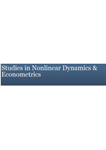 Authors: Iván Arribas, Francisco Pérez and Emili Tortosa-Ausina
Authors: Iván Arribas, Francisco Pérez and Emili Tortosa-AusinaTitle: The Determinants of International Financial Integration Revisited: The Role of Networks and Geographic Neutrality
Source: Studies in Nonlinear Dynamics & Econometrics
Abstract: Over the last two decades, the degree of international financial integration has increased substantially, becoming an important area of research for many financial economists. This paper explores the determinants of the asymmetries in the international integration of banking systems. We consider an approach based on both network analysis and the concept of geographic neutrality. Our analysis focuses on the banking systems of 18 advanced economies from 1999 to 2005. Results indicate that banking integration should be assessed from the perspective of both inflows and outflows, given that they show different patterns for different countries. The parametric techniques point out the remarkable role of both geographic distance and trade integration. However, the most relevant results are yielded by nonparametric techniques, which we use due to the lack of well-established results on the determinants of trade in assets. These techniques reveal that the effect of the covariates on banking integration is not constant over the conditional distribution which (in practical terms) implies that the sign of the relationship varies across countries.
Recommended citation:
Arribas, I., F. Pérez and E. Tortosa, 2011. "The determinants of international financial integration revisited: The role of networks and geographic neutrality", Studies in Nonlinear Dynamics & Econometrics, 15(1)
Further articles






